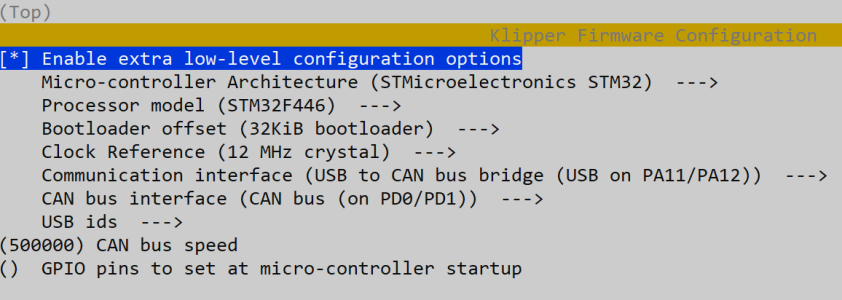Smart_ Ostrich_V2.3824
Member
Hello everyone. Wonderful discussion going on in here.
So I have an SB2040, Octopus, and a mks canable U2C. How would you recommend it be done? I'm thinking Octopus in bridge mode and save the U2C for use with my EBB42 for another project.Basically putting the Octopus in bridge mode (Klipper firmware options) uses the USB composite feature to expose two devices - a serial port for "normal" mainboard communication to control the steppers and peripherals and a CAN adapter. The STMs in the Octopus boards are fairly beefy (i.e. when running Marlin or RepRap firmware they have to do all the processing) so while doing this does technically add overhead, it doesn't matter.
If you have an Octopus and are willing to try bridge mode - it does work - I use it in one printer. It is a less tried and true config, so fewer guides, and you may get stuck with some edge cases or early adopter problems. One I can recall is, for example, CAN boot via USB (for easier firmware updates) didn't work initially in bridge mode.
If you don't have an Octopus but already have a working printer - I definitely don't suggest getting an Octopus and going through the hassle of reconfiguring solely for CAN integration as USB adapters are fairly low-cost now and work just as well. My older V2 started with two SKRs, so I just added a USB adapter.


